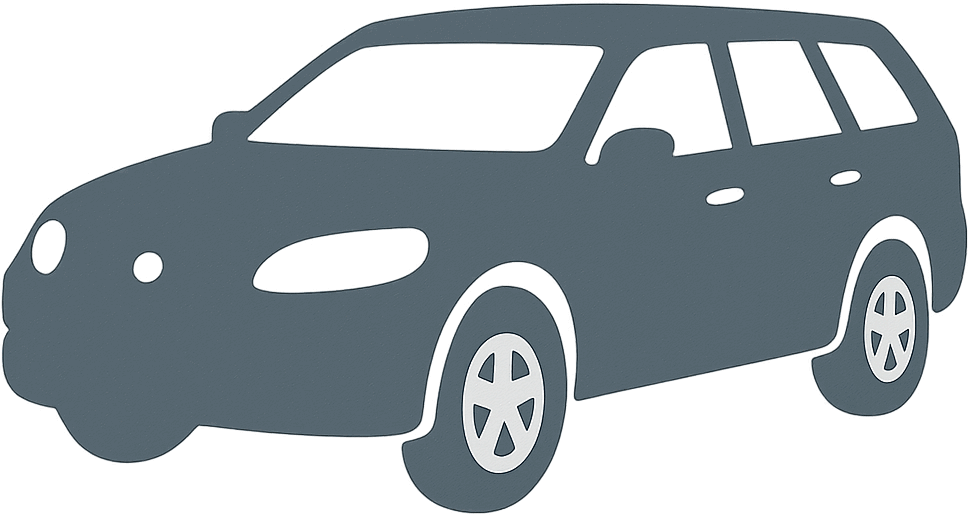 1986 Tofas Kartal Dimensions, Size & Specs
1986 Tofas Kartal Dimensions, Size & Specs
Measurements of the 1986 Tofas Kartal, engineered for optimal performance and comfort
| Dimensions | |
|---|---|
| Length: | 4360-4396 mm171.7-173.1 in14.3-14.4 ft |
| Width: | 1642 mm64.6 in5.4 ft |
| Height: | 1496 mm58.9 in4.9 ft |
| Trunk Capacity: | 846 liter29.9 cu ft |
| Trunk Capacity (Max): | 2054 liter72.5 cu ft |
| Weight Specifications | |
| Curb Weight: | 1060-1100 kg2337-2425 lbs |
| Maximal permitted Weight: | 1550 kg3417 lbs |
| Tire Specifications | |
| Tire Sizes: |
|
The Tofas Kartal, produced from 1986 to 2001, is a practical and spacious station wagon renowned for its utility and reliable performance. Measuring between 4360 and 4396 mm (approximately 171.7 to 173.0 inches) in length, 1642 mm (64.6 inches) in width, and standing 1496 mm (58.9 inches) tall, the Kartal offers a balanced compact size ideal for urban and suburban driving. Weighing between 1060 and 1100 kg (2337 to 2425 lbs) curb weight, it handles efficiently without sacrificing cargo capacity or passenger comfort. The maximum permissible weight reaches 1550 kg (3417 lbs), allowing for robust load-carrying capabilities. One of the standout features of the Tofas Kartal is its impressive luggage capacity, providing 846 liters (29.9 cubic feet) of trunk space with the rear seats upright, and a generous 2054 liters (72.5 cubic feet) with the rear seats folded down, making it suitable for families, outdoor activities, or commercial use. Tire options for the Kartal include sizes 185/70 R14 S, 185/65 R14, and 185/70 R14 T, ensuring reliable traction and ride comfort. Overall, the Tofas Kartal combines practical dimensions, significant cargo space, and moderate weight, positioning it as a versatile choice in the station wagon segment during its production years.
Discover the standout features that make the 1986 Tofas Kartal a leader in its class
Have a question? Please check our knowledgebase first.
The Tofaş Kartal station wagon from the 1986 to 2001 production period has a length ranging between 4360 mm and 4396 mm (approximately 171.65 to 173.11 inches). It measures 1642 mm (about 64.61 inches) in width and has a height of 1496 mm (around 58.90 inches). These dimensions provide a well-proportioned compact station wagon footprint typical of its era, balancing interior space with manageable urban driving and parking.
The curb weight of the Tofaş Kartal station wagon ranges from 1060 kg to 1100 kg (approximately 2337 to 2425 lbs). This means the car's weight when empty but ready to drive including all standard equipment and fluids. Its maximum weight capacity, which includes passengers and cargo, is rated at 1550 kg (roughly 3417 lbs). This capacity allows the Kartal to carry a reasonable load without compromising safety or performance.
The Tofaş Kartal is notable for its generous luggage space. With rear seats up, it offers a luggage capacity of 846 liters (approximately 29.87 cubic feet). When the rear seats are folded down, this capacity significantly expands to 2054 liters (around 72.49 cubic feet), making it a practical choice for transporting larger cargo or bulky items, ideal for family trips or commercial uses.
Yes, the Tofaş Kartal fits comfortably into a standard residential garage. Typical garage dimensions in many countries are around 2438 mm wide by 4877 mm deep (8 by 16 feet). With a width of 1642 mm (64.61 inches) and length ranging from 4360 to 4396 mm (171.65 to 173.11 inches), the Kartal leaves sufficient space for easy parking and maneuverability inside a standard garage, including some extra space around for opening doors and passenger comfort.
The Tofaş Kartal's width is 1642 mm (about 64.61 inches), which is relatively moderate for station wagons produced in the late 1980s and 1990s. Many comparable European and compact station wagons from that period typically ranged from 1600 mm to 1700 mm in width. This moderate width provides a good balance between interior cabin space and city driving ease, allowing the Kartal to navigate narrower streets while maintaining sufficient shoulder space for passengers.
The Tofaş Kartal was typically equipped with tire sizes suitable for its dimensions and weight, including 185/70 R14 S, 185/65 R14, and 185/70 R14 T. These tire specifications indicate a 14-inch rim diameter, with widths of 185 mm and slightly varied aspect ratios (65 and 70), offering a balanced ride comfort, grip, and handling appropriate for a family station wagon of its era.
The Tofaş Kartal generation produced between 1986 and 2001 was an evolution of earlier models in the Tofaş lineup, such as the Tofaş Sahin and prior Kartal versions. Generally, this generation saw slight increases in length and width compared to predecessors—roughly a few centimeters longer and marginally wider—enhancing interior space and cargo capacity. These changes improved the vehicle’s practicality without significantly affecting its maneuverability or curb weight, reflecting incremental design evolution to meet customer needs for more carrying space and comfort.
With a height of 1496 mm (about 58.90 inches), the Tofaş Kartal matches well with other compact to mid-size station wagons of its time, which generally ranged between 1450 mm and 1550 mm in height. This height provides adequate headroom for front and rear passengers, contributing to overall comfort. When paired with its roomy luggage capacity and a functional station wagon body style, the Kartal offered competitive interior volume that rivaled many European and Asian station wagons, making it a practical family and utility vehicle.
The curb weight of the Tofaş Kartal ranges between 1060 and 1100 kg (2337 to 2425 lbs), which was typical for compact station wagons produced during the late 1980s through early 2000s. This lightweight construction helped maintain fuel efficiency and driving agility. The maximum weight capacity of 1550 kg (3417 lbs) positions it well for carrying a typical family and their belongings without overburdening the chassis. Competitors often had similar weight ranges, but the Kartal’s relatively modest weight combined with excellent load capacity provided a good balance between performance and utility.
The Tofaş Kartal station wagon’s design offers practical advantages for everyday use. Its spacious luggage capacity, especially with rear seats folded (2054 liters or 72.49 cubic feet), supports versatile cargo needs, from groceries to larger items. Its moderate dimensions allow for easy maneuvering in urban environments and standard garage storage. Additionally, its capacity to carry up to 1550 kg (3417 lbs) total weight gives reliability for family travel or light commercial purposes. Combined, these features make the Kartal a dependable and flexible vehicle choice across diverse driving scenarios.
